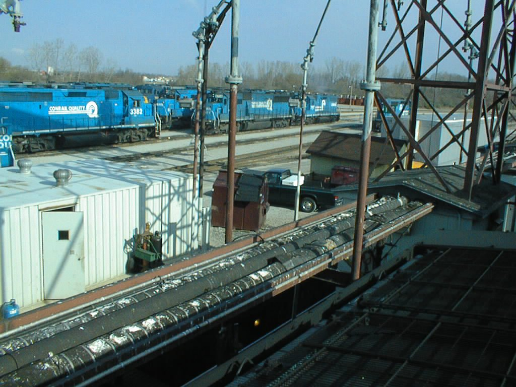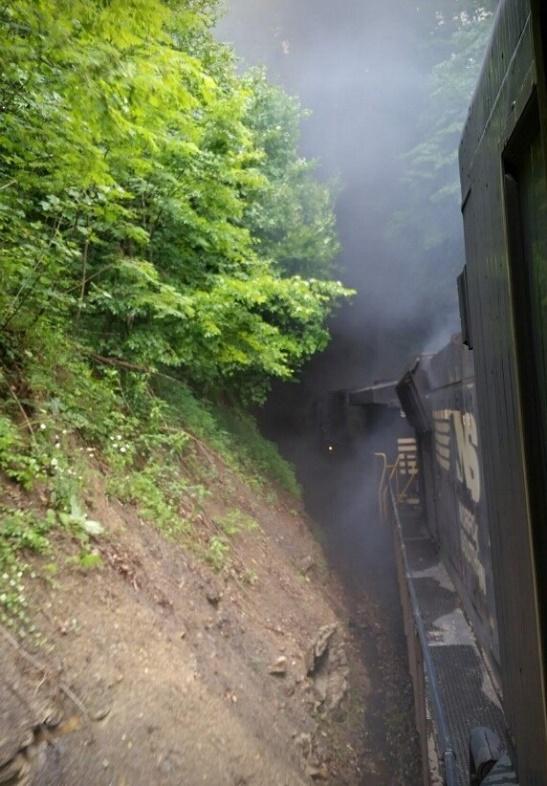
The nation’s railroads are fully aware of how dangerous railroad work has been and continues to be. Yet, at the same time, the industry is trying to roll back safety regulations, or, in their words, “to modernize and streamline” them (1). A prior blog highlighted that railroads are seeking to get rid of safety regulations that keep railroad workers safe. The industry trade group promoting these changes is the Association of American Railroads (AAR), which represents the nation’s largest railroads and serves as their voice in Washington to influence policy-making.
Going back many decades, the AAR was involved in educating railroad medical departments and management about the risks associated with railroad work. In some ways, the AAR was ahead of its time in the recognition of workplace dangers facing railroad workers, including the risks of injury from adjusting railroad draw bars, from operating handbrakes and railroad track switches, and from using hand tools, such as spike mauls and claw bars.
One safety area that the AAR focused on over many years concerned the health and cancer risks from unprotected exposure to asbestos, silica, diesel exhaust, and welding fumes. Meeting minutes from AAR meetings attended by railroad representatives from the nation’s largest railroads provide incredible insight into just how aware the railroads were about cancer hazards:
- 1932 AAR Meeting Minutes (2): “The subject of dust as an industrial hazard has been presented for consideration by the Committee. The subject cannot be considered as inherently a railroad problem; however, it may arise in connection with various lines of work, and when it does so, presents a problem which demands attention.”
- 1937 AAR Meeting Minutes (3): “Silica, asbestos, and lead are the principle substances generating toxic dusts to which railway employees may be exposed.”
- 1955 AAR Meeting Minutes (4): “Among the constituents of diesel exhaust are aromatic hydrocarbons. Some aromatic hydrocarbon compounds may cause cancer.”
- 1958 AAR Meeting Minutes (5): “There is very good proof that asbestos is a cause of carcinoma.”
- 1965 AAR Meeting Minutes (6): “I may even take the liberty of discussing the relationship of welding and burning fumes to pulmonary disease. Although they appear innocuous, I have sufficient literature and actual cases to impress you with the realization that welding and burning operations may have toxic possibilities.”
- 1982 AAR Meeting Minutes (7): “…brief intensive exposures may produce disease as well as prolonged exposure periods…there may or may not be a safe level of exposure to asbestos.”
Perhaps the most alarming thing about these health and cancer risk discussions was that the railroads knew how to protect against these exposures from an AAR meeting that took place in 1935 (8):
“In the way of prevention it becomes necessary
- To educate all concerned.
- Get rid of dust.
- Sprinkle the working area with water.
- Have employees wear inhalers.
- Have frequent analyses made of the dust content of the air at different times during the working hours.”
Unfortunately, even though railroads were aware of the health and cancer risks caused by exposure to asbestos, diesel exhaust, silica, welding fumes, and other toxic fumes and dusts, they did not take any corrective action to reduce the risks to workers until many decades later. This delay undoubtedly led to countless workers later being diagnosed with lung disease and all different types of cancer, including lung cancer, mesothelioma, bladder cancer, throat cancer, colon cancer, stomach cancer, kidney cancer, and blood cancers, such as leukemia and lymphoma.
Given the recent railroad push towards Precision Scheduled Railroading (PSR) and profits over worker safety, the AAR’s change in focus–to fewer safety regulations, not more–should come as no surprise. After all, the AAR is just moving forward with the preferred agenda of those various railroads they serve.
If you or a loved one worked for the railroad and suffer from cancer, pulmonary fibrosis, or any other type of disease caused by dusts or fumes, reach out the railroad injury lawyers at Doran and Murphy for a free and confidential initial consultation! Our lawyers have decades of experience in railroad injury lawsuits and railroad cancer lawsuits and can get you the compensation you deserve.
(1) Association of American Railroads (AAR) Website: https://www.aar.org/news/railroads-urge-usdot-to-embrace-pro-innovation-performance-based-regulations/
(2) June 13-14, 1932- AAR Meeting, New York City, New York
(3) June 7-8, 1937- AAR Meeting, Atlantic City, New Jersey
(4) May 4-6, 1955- AAR Meeting, Washington, District of Columbia
(5) March 24-26, 1958- AAR Meeting, Edgewater Park, Mississippi
(6) March 3-5, 1965- AAR Meeting, Chicago, Illinois
(7) May 14, 1982- AAR Meeting and Presentation by Dr. Ernest Rouse
(8) June 10-11, 1935- AAR Meeting, Atlantic City, New Jersey





